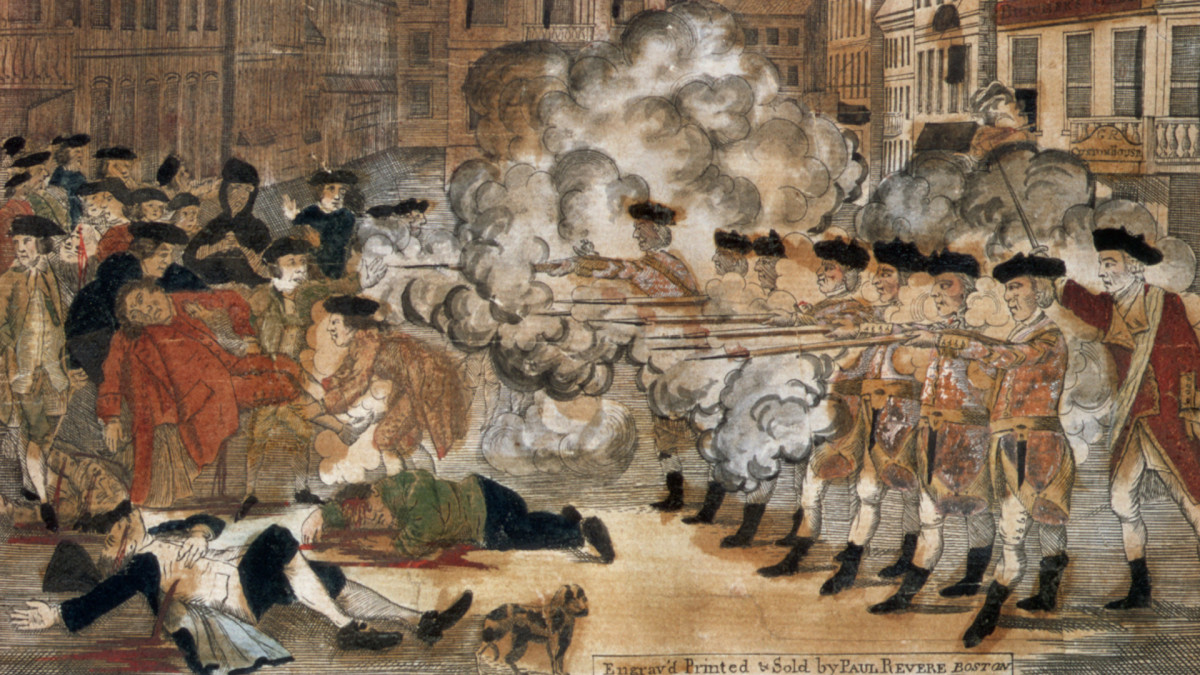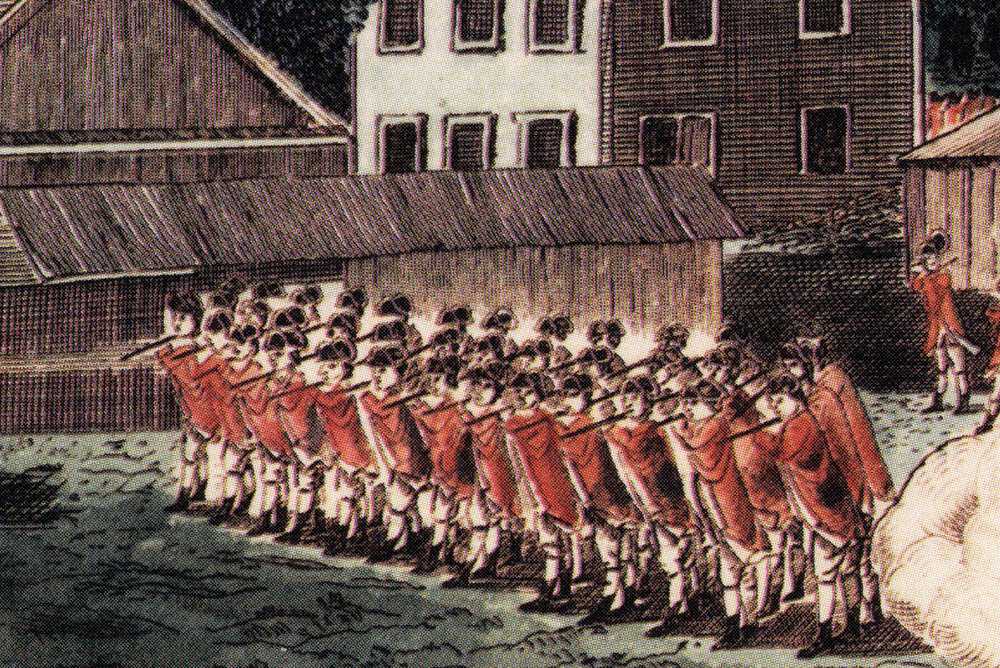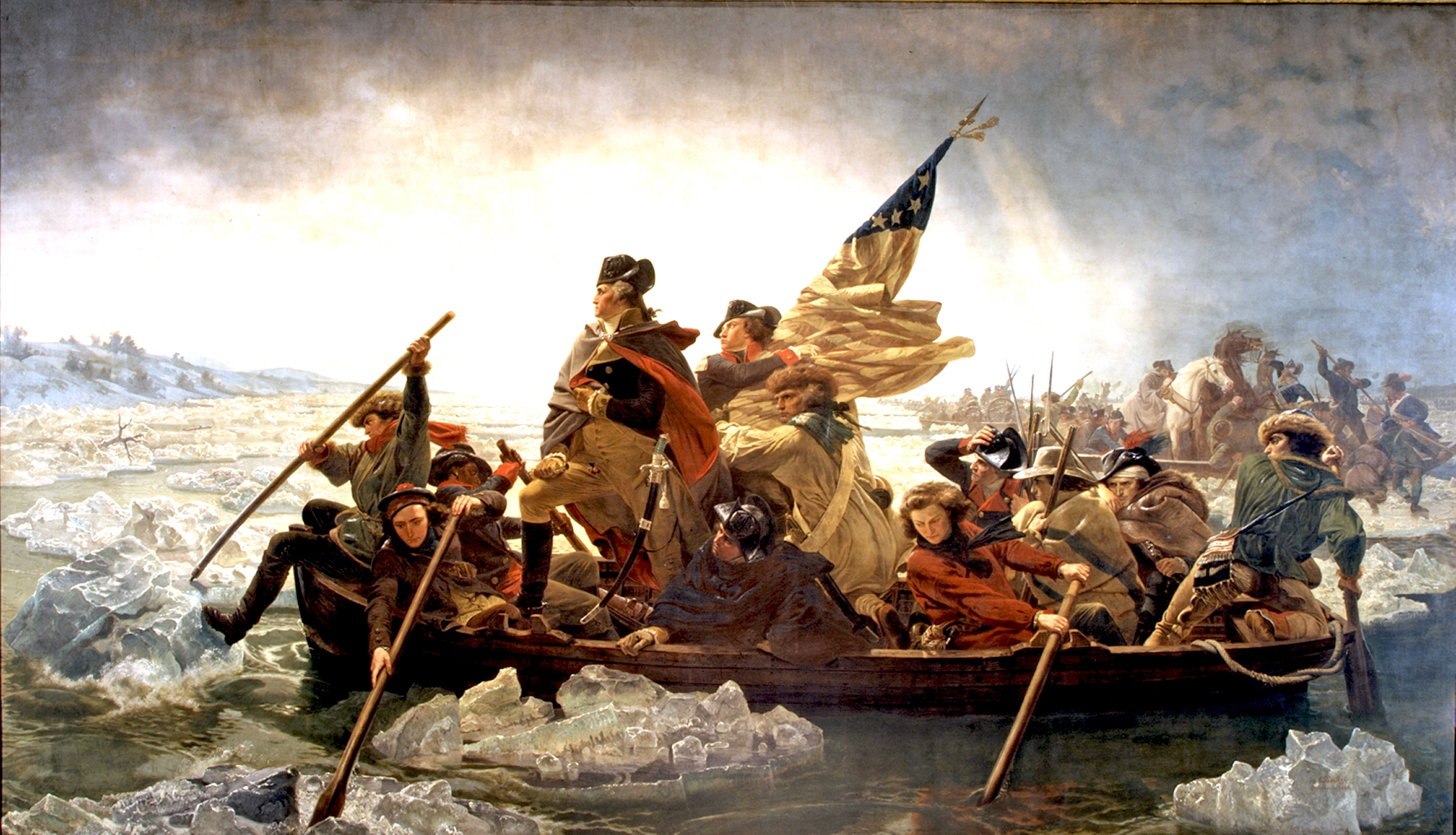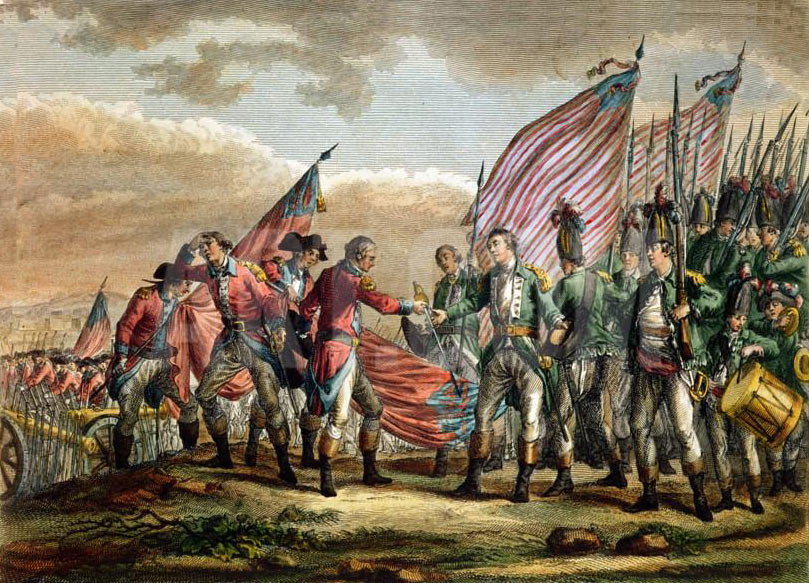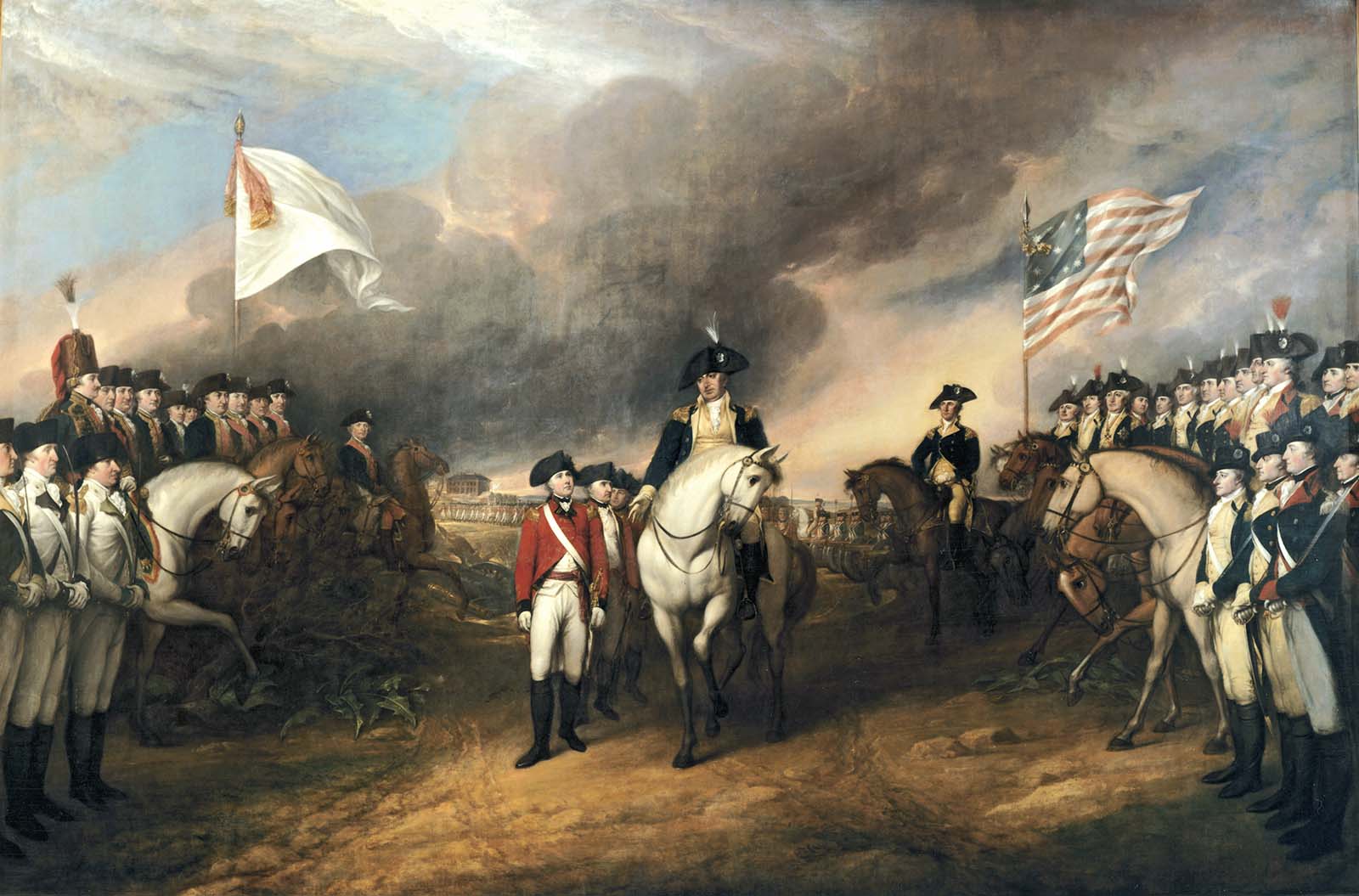In the past few study guides, we've reviewed the context of the American Revolution, including the
French and Indian War,
British laws and policies, and
the Enlightenment. Here is a quick review of these concepts:
The American colonies believed that they were being unfairly taxed by Great Britain, without representation in the British government.
The colonists believed that they were not receiving fair treatment from the British government in terms of trade and commerce. They perceived that the British government was passing laws that benefited merchants and manufacturers in Britain to the disadvantage of the American colonies.
The colonists were also resentful of the presence of British troops in the colonies, which they saw as a violation of their rights and a threat to their security.
The colonists were further incensed by the Quartering Acts, which required them to provide housing and supplies for British troops, and the Intolerable Acts, which were a series of laws passed by the British government in 1774 that was seen as a direct attack on colonial rights and liberties.
The ideas of Enlightenment and the principles of natural rights, limited government, and the consent of the governed had a strong influence on the colonists' views and helped to shape their desire for independence.
The colonist began to see themselves as Americans and not just as subjects of the British king and they began to demand representation and rights they believed they were entitled to as free people.
The Boston Massacre is another event that is considered pivotal in the buildup of the American Revolution. Since we haven't covered it in any of this unit's previous guides, let's quickly discuss it.
The Boston Massacre was a deadly confrontation between British soldiers and a group of American colonists in Boston in 1770. As you know, tensions between the colonists and the British government had been rising for several years prior to the incident, due to a number of disputes over taxes, trade regulations, and other issues.
Image Courtesy of History.com
On the evening of March 5, a group of colonists began taunting and throwing snowballs at a group of British soldiers who were guarding the Customs House in Boston. The soldiers, who had been stationed in the colonies for some time and were resentful of the treatment they had received from the colonists, were not used to this kind of treatment. As the confrontation between the colonists and soldiers escalated, a soldier fired his weapon, and then the others joined in, shooting into the crowd of colonists. Five colonists were killed in the altercation, and several more were injured.
News of the incident quickly spread throughout the colonies, and it caused a great deal of outrage. The soldiers involved in the Boston Massacre were put on trial for murder, and the trial was widely covered in the press. John Adams, later the second President of the United States, served as the defense attorney for the soldiers. The soldiers were ultimately found not guilty of murder, but they were found guilty of manslaughter and received reduced sentences.
Many Americans viewed the shooting as an unjustified act of aggression by the British government, and it became an important symbol of British oppression in the years leading up to the Revolution.
Although you don't have to know the war to every detail, it is important to note several battles.
In April of 1775, the British sent numerous troops to Lexington and Concord, Massachusetts, to seize stored gunpowder that the patriot rebels harbored. Paul Revere went on his famous ride warning that the British were coming, urging the colonial minutemen militia to get up and get their guns. Gunfire erupted in Lexington, leaving eight American colonists dead in this brief battle lost by the minutemen. About 100 spectators watched.
Image Courtesy of PBS
This battle, The Battle of Lexington and Concord, was between a colonial militia, made up of local farmers and townspeople, and a force of British soldiers. The gunfire during this battle is known as “the shot heard round the world,” referring to the opening shots of the first military engagement of the Revolutionary War.
The British redcoats continued to the nearby town of Concord. After the British found no weapons, they started a retreat to Boston, where they were met with increasingly strong resistance from the Minutemen. The Minutemen utilized gunfire and guerilla warfare tactics against the shocked British at every turn possible. The redcoats suffered 300 casualties, and the war started.
Shortly after these battles, in June 1775, the Second Continental Congress appointed George Washington as the commander-in-chief of the Continental Army.
Washington was chosen for his military experience, his reputation for courage and leadership, and his standing in the colonies. He had served as an officer in the British army during the French and Indian War and had a good reputation among the colonial leaders. His appointment as commander-in-chief was crucial in unifying the colonies and providing much-needed organization and leadership to the revolutionary cause.
At this point, King George III hired foreign mercenary soldiers, the Hessians, to supply more human resources. They were known for their discipline and training and were considered to be some of the best soldiers in Europe at the time.
The British now sent 35,000 troops to New York City in July of 1776. They launched a three-pronged assault on the American lines, attacking the flanks and center of the American position. Despite determined resistance, the Patriots were unable to hold back the superior numbers and training of the British. They were forced to retreat in disarray, and many were captured. George Washington, therefore, suffered a severe loss at the Battle of Long Island and retreated to New Jersey.
In late December 1776, Washington's army was encamped at McKonkey's Ferry, Pennsylvania, across the Delaware River from Trenton. The Continental Army had suffered heavy losses and desertions, and morale was low. Washington believed that a surprise attack on Trenton could boost morale and also disrupt the movement of supplies for the British army.
On the evening of December 25, Washington and his army crossed the Delaware River in a heavy snowstorm and caught the Hessians by surprise. The battle was fought primarily in the streets of Trenton, and the Patriots were able to quickly defeat the Hessians. The Hessians suffered over 900 casualties, while the Patriots suffered only a few dozen.
Image Courtesy of Columbia University
The
Battle of Trenton was a crucial victory for the Patriots and an important turning point in the Revolutionary War. The victory brought new hope to the Patriots and encouraged many to enlist in the Continental Army. It also disrupted the movement of supplies for the British army, making it more difficult for them to continue their campaign in the region. The victory at Trenton also revealed the vulnerability of the British to unexpected attacks, inspiring Washington to continue to plan surprise attacks and raids in the months to come.
The Battle of Saratoga was a series of two battles that became the turning point of the war. It was fought in Saratoga, New York, along the Hudson River in October of 1777.
In short, three British generals were to coordinate and meet near Albany and defeat the Americans, which would then divide America geographically.
Image Courtesy of British Battles
The long explanation is that the British army, under the command of General John Burgoyne, was ordered to move south from Quebec to Albany in an attempt to split the colonies in two and isolate New England from the rest of the colonies. Burgoyne's plan was to move his troops south along the Hudson River and link up with the forces of General William Howe, who was moving north from New York City. However, the Americans, under the command of General Horatio Gates, were able to slow Burgoyne's advance and inflict heavy casualties on his army.
The British were surrounded and forced to surrender, and it was one of the most significant military defeats for the British army during the Revolutionary War. You may ask, why was this battle a turning point?
This colonist victory motivated France to form a military alliance with America! Some other European countries formed alliances with France to fight Britain in other parts of the world. Britain now had other war priorities. Along with the aid of French soldiers and capital, America was on its way to winning the Revolutionary War.
The Battle of Yorktown, also known as the Siege of Yorktown, was fought in the autumn of 1781 in Yorktown, Virginia, along the Chesapeake Bay. It was a decisive victory for the Patriots, led by General George Washington and French General Jean-Baptiste Donatien de Vimeur, comte de Rochambeau, over the British Army, led by Lord Charles Cornwallis.
General Cornwallis was waiting for reinforcements in Yorktown, and General Washington made secret plans with France to convene in Yorktown to have the French navy blockade Cornwallis. This tactic worked as they not only trapped the British army, but they blockaded the Chesapeake Bay and prevented Cornwallis from receiving reinforcements.
On October 19th, 1781, Lord Cornwallis, realizing the hopelessness of his position, sent a note of surrender.
Lord Cornwallis’s surrender signaled the victory of the American revolutionaries over what they considered to be the despotic rule of Britain. This moment would live on in American memory as a pivotal one in the nation’s origin story, prompting the United States government to commission artist John Trumbull to create this painting of the event in 1817. John Trumbull, Surrender of Lord Cornwallis, 1820. Image Courtesy of Wikimedia
The Battle of Yorktown was a decisive victory for the Patriots and marked the end of the major military operations in North America during the Revolutionary War. The defeat at Yorktown forced the British government to recognize the independence of the United States and led to the negotiation of the Treaty of Paris in 1783, which officially ended the war.
The treaty recognized the independence, sovereignty, and territorial integrity of the United States and set the boundaries between the newly independent nation and British North America. The treaty established the Mississippi River as the western boundary of the United States, with the exception of Spanish Florida, which remained under British control. The treaty also provided for the evacuation of British troops from the colonies and the return of property seized by the British during the war.
The treaty was also a turning point in world history; it marked the first time that a colony had successfully rebelled against its European colonial power and established its independence. The independence of the United States also served as an inspiration for many other colonies around the world that would later seek their own independence.
